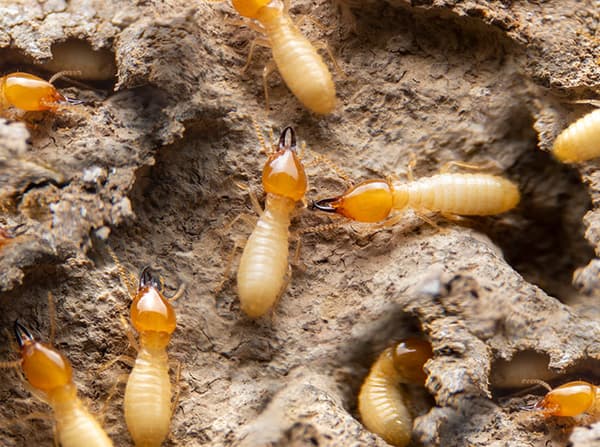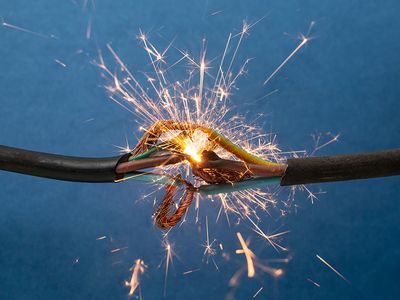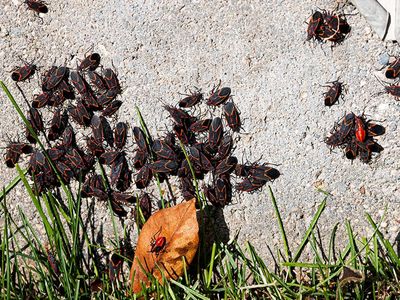What do termites look like?
In Pennsylvania, the most common type of termite is the Eastern subterranean termite. These termites live in the soil and are rarely seen unless you're actively looking for them—or you stumble across them while gardening or doing yard work.
Each colony has a few different castes that serve different purposes:
- Swarmers (Queens & Kings): These winged termites are dark brown to black and about ⅜ inch long. After a brief mating flight (called a swarm), they shed their wings and become the reproductive king and queen.
- Workers: These are the ones doing the damage. They’re pale, soft-bodied, and only about ⅛ of an inch long.
- Soldiers: Larger than workers, soldiers have large orange heads and intimidating-looking mandibles (don’t worry—they’re not dangerous to humans).

Are termites dangerous?
Termites won’t bite you, and they don’t spread disease, so they’re not dangerous in that way. But when it comes to your wallet and the structural integrity of your home—yes, they can be a big problem. Termites quietly chew through wooden materials like studs, beams, and subflooring, which can lead to costly repairs if you don’t catch the infestation early.
How do termites get inside homes and buildings?
Eastern subterranean termites build their colonies in the soil, and they gain access to your home from the ground up. They enter through:
- Cracks in foundations
- Gaps where plumbing or electrical lines pass through walls
- Mud tubes (shelter tunnels) they construct up foundation walls
- Wood-to-soil contact, like deck posts, fence boards, or even firewood stacked against the house
They’re especially drawn to moisture, so Pennsylvania homes with damp basements or crawl spaces are more vulnerable.
How long does it take subterranean termites to do damage?
One or two termites won’t cause much harm—but unfortunately, termite colonies in Pennsylvania can number in the hundreds of thousands. They work 24/7, even in winter (especially if your home is warm and cozy), and they don’t take breaks.
Many property owners don’t realize they have a problem until years later. That's because these pests often chew away silently behind walls avoiding detection.
How can I tell if I have a subterranean termite problem?
There are many ways to detect termites. Some warning signs will appear. Some warning signs are accidentally uncovered. Most of the time, you'll have to go looking for signs of termite activity.
- Winged termites (swarmers) inside your home, especially in spring (March–May in PA)
- Piles of discarded wings near windows or doors
- Mud tubes along your foundation or inside the basement or crawl space
- Damaged wood that sounds hollow when tapped
- Blistering paint or warped wood
- Clicking or rustling sounds inside walls (caused by active termites).
How do I get rid of termites?
Contact the Evergreen Pest Solutions team to learn more about our professional termite control services. Available in Pittston, Scranton, and elsewhere in our PA service area, our trusted termite exterminators eliminate and prevent termite infestations.
Can I prevent a termite infestation?
To make your property less attractive to termites, we recommend implementing the following tips:
- Eliminate wood-to-ground contact - make sure siding, deck supports, and other wooden parts of the structure do not come into direct contact with the soil.
- Reduce moisture by fixing leaks, using dehumidifiers, and ensuring proper drainage around the house.
- Address the damp crawl space.
- Replacing water damaged wood inside and out and removing rotting stumps and other wood debris from the yard.
- Seal cracks and other potential entry points.
For the most comprehensive termite protection, contact Evergreen Pest Solutions. Our termite control is a great option to keep these wood-destroying insects from establishing colonies on your property.








